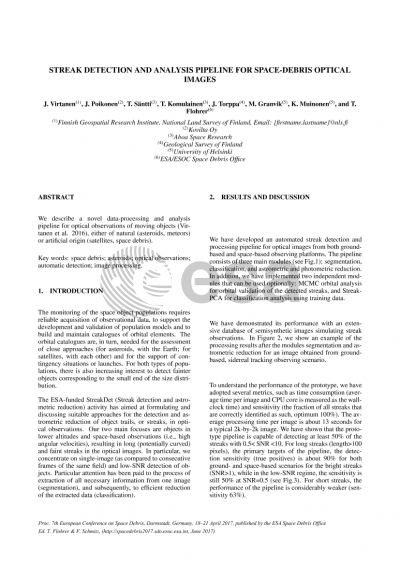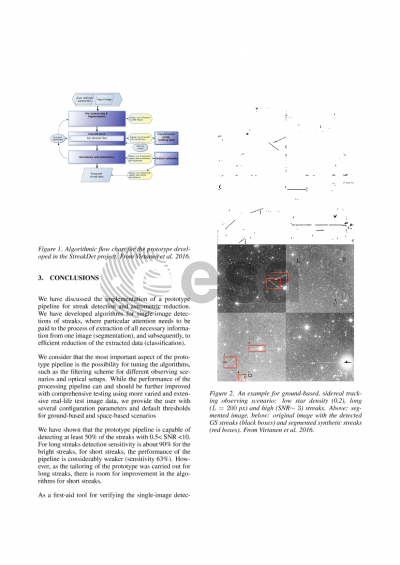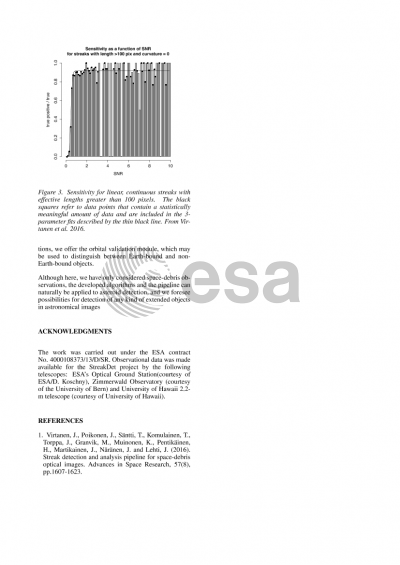Document details

Abstract
We describe a novel data-processing and analysis pipeline for optical observations of moving objects (Virtanen et al. 2016), either of natural (asteroids, meteors) or artificial origin (satellites, space debris). The monitoring of the space object populations requires reliable acquisition of observational data, to support the development and validation of population models and to build and maintain catalogues of orbital elements. The orbital catalogues are, in turn, needed for the assessment of close approaches (for asteroids, with the Earth; for satellites, with each other) and for the support of contingency situations or launches. For both types of populations, there is also increasing interest to detect fainter objects corresponding to the small end of the size distribution.
The ESA-funded StreakDet (Streak detection and astrometric reduction) activity has aimed at formulating and discussing suitable approaches for the detection and astrometric reduction of object trails, or streaks, in optical observations. Our two main focuses are objects in lower altitudes and space-based observations (i.e., high angular velocities), resulting in long (potentially curved) and faint streaks in the optical images. In particular, we concentrate on single-image (as compared to consecutive frames of the same field) and low-SNR detection of objects. Particular attention has been paid to the process of extraction of all necessary information from one image (segmentation), and subsequently, to efficient reduction of the extracted data (classification).
We have developed an automated streak detection and processing pipeline and demonstrated its performance with an extensive database of semisynthetic images simulating streak observations both from ground-based and space-based observing platforms. The average processing time per image is about 13 seconds for a typical 2k-by-2k image. For long streaks (length > 100 pixels), primary targets of the pipeline, the detection sensitivity (true positives) is about 90% for both scenarios for the bright streaks (SNR > 1), while in the low-SNR regime, the sensitivity is still 50% at SNR = 0.5.
References:
Virtanen, J., Poikonen, J., Säntti, T., Komulainen, T., Torppa, J., Granvik, M., Muinonen, K., Pentikäinen, H., Martikainen, J., Näränen, J. and Lehti, J. (2016). Streak detection and analysis pipeline for space-debris optical images. Advances in Space Research, 57(8), pp.1607-1623.
Preview




